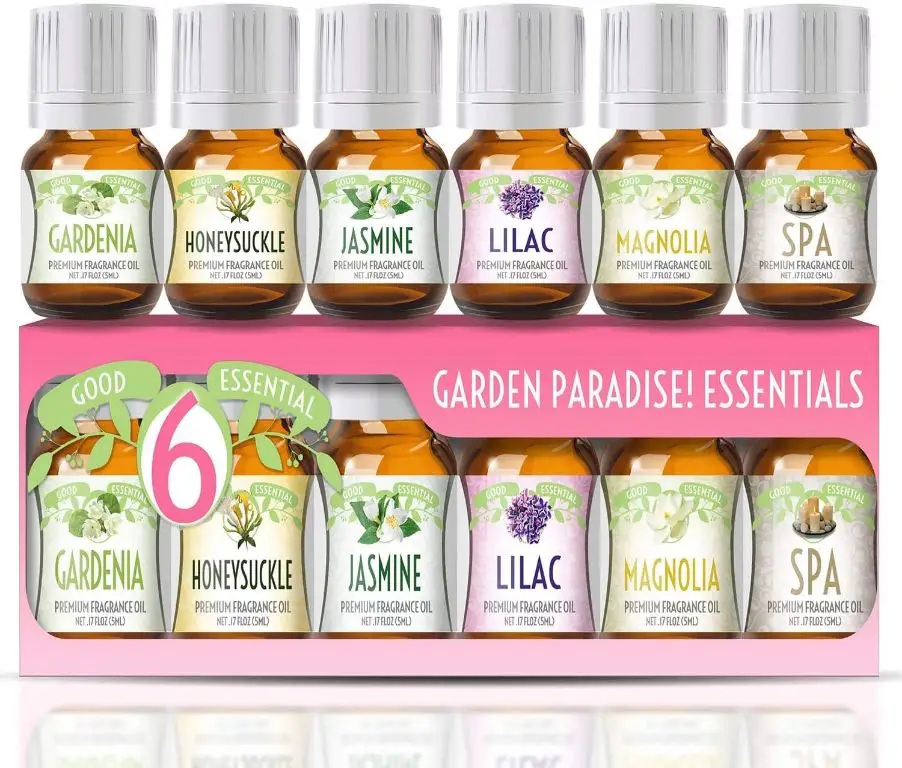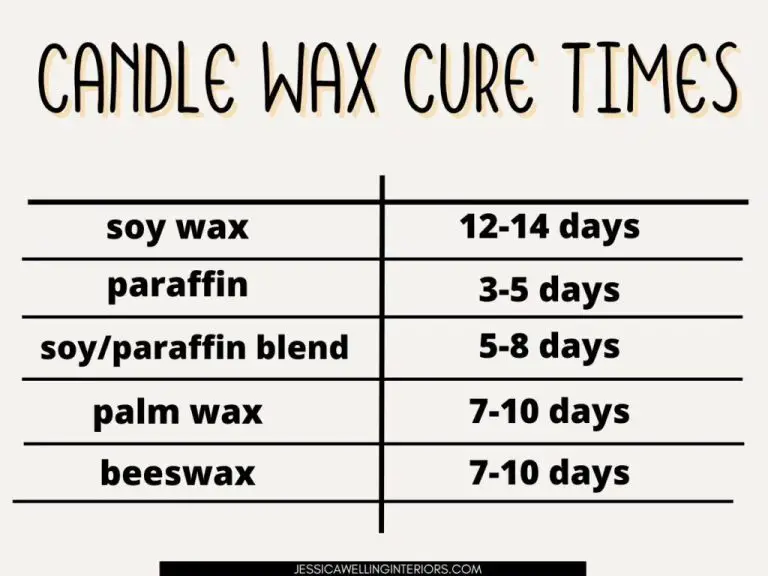What Wax Holds Scent The Best?
Wax is a key ingredient in candle making that affects how well a candle holds scent. Wax is a substance made from oils, fats, or resins that becomes solid at room temperature. When making candles, different types of waxes melt at different temperatures which impacts scent throw. Scent throw refers to how well a burning candle diffuses its fragrance into the surrounding air. A candle with good scent throw will fill a room with its fragrance when lit. The wax holds the fragrance oils and allows the scent to be released when melted by the candle flame. Choosing the right wax helps maximize scent throw so the candle has a stronger aroma when burned. This article explores the different types of candle waxes and how they impact fragrance retention and diffusion.
Natural Waxes
Some of the most commonly used natural waxes for candles include beeswax, soy wax, palm wax, and bayberry wax. Beeswax is secreted by honey bees to construct their honeycombs and is made up of about 300 different compounds (https://www.marthastewart.com/8061950/candle-wax-type-guide). It has a lovely natural honey aroma and is known for holding scent well. Soy wax is made from hydrogenated soybean oil and is often blended with other waxes. It burns cleanly and holds scent moderately well. Palm wax comes from the leaves of palm trees and is harder than soy wax, making it good for detailed candle designs. Bayberry wax is from the berries of the bayberry shrub and has a distinctive, pleasant scent. It can be quite expensive but is prized for its excellent scent retention.
Paraffin Wax
Paraffin wax is the most commonly used candle wax. It is a petroleum-based wax made from refined oil. Paraffin wax is relatively inexpensive compared to other waxes (source). Some key properties of paraffin wax are that it has a melting point between 47-65°C, a density of around 0.9 g/mL at 25°C, and a chemical composition of straight chain alkanes with 20-40 carbon atoms (source). Paraffin wax is known for being an affordable option for candle making and burning cleanly with little residue. However, it can produce more soot than other natural waxes when burned (source). Overall, paraffin is a versatile, inexpensive wax commonly used for candles and other applications like lubrication and waterproofing.
Gel Wax
Gel wax is a blended candle wax that contains additives to make it thicker than traditional paraffin wax. It allows candles to hold more fragrance oil and burn slower and cleaner than paraffin (https://findniche.com/aliexpress/gel-candle-wax-wholesale-dropshipping). Gel wax is popular for container candles because it adheres well to the sides of glass and metal containers. It has a high melting point between 135-165°F which provides a long, even burn. Gel wax also enables deep, vibrant colors in candles that aren’t achievable with paraffin wax. The thickness makes it suitable for detailed designs and embeds.
Container Material
The material that a candle’s container is made of can impact how well it holds scent. The most common materials for candle containers are glass, tin, and ceramic.
Glass containers allow for excellent hot throw, or scent dispersion when lit. The smooth glass surface allows fragrance to continuously rise up and out of the container uninhibited. Glass also allows you to easily see how much wax remains.
Metal tins like aluminum and steel also provide great hot throw properties. The tin helps reflect heat toward the wax pool, helping to melt and disperse more fragrance. Tins are more durable than glass as well. However, you can’t see the remaining wax level in a tin.
Ceramic containers are stylish but can impede hot throw somewhat. The porous surface absorbs some of the fragrance rather than letting it disseminate. Glazed ceramic is better than unglazed for fragrance retention. Candles may also get stuck more easily in ceramic containers.
Overall, glass and metal tins allow for the best hot throw and scent retention for container candles. Ceramic containers are more aesthetically pleasing but may absorb more scent. The container material is an important factor when maximizing fragrance dispersion.
Wick Type
The type of wick used in a candle can greatly impact how well it holds scent. Three of the most common wick types are cotton, wood, and paper.
Cotton wicks are the most popular and widely used. They burn evenly and curl as they burn, which promotes full wax pool melting. However, some researchers find that cotton wicks tend to mute fragrances somewhat. Source
Wooden wicks make a crisper, crackling sound as they burn. They also tend to release more scent from candles than cotton wicks. The wood grain helps draw wax up to the burning tip. Wood wicks come in various shapes and widths. Source
Paper wicks are flat and wide in shape. They are slower burning than other wick types. The increased surface area of paper wicks helps emit more fragrance. However, they require trimming to avoid carbon build up. Paper wicks work best incontainers with a large diameter. Source
Fragrance Oils
The fragrance oil is arguably the most important component of a scented candle. The oil carries the scent and allows it to be dispersed when the candle is burned. There are two main types of fragrance oils used in candles: essential oils and synthetic fragrance oils.

Essential oils are extracted from plants and capture the natural aroma of ingredients like flowers, herbs, spices and citrus fruits. They are highly concentrated and provide authentic, bold scents. Some popular essential oils for candles include lavender, eucalyptus, lemon and peppermint. The downside is that essential oils can be quite expensive.
Synthetic fragrance oils are artificially created in a lab to mimic natural scents or produce entirely new aromas. They allow candle makers to access a huge variety of complex fragrances at a lower cost. However, some find synthetic fragrance oils to smell artificial when compared to the real thing. A candle using synthetic oils will typically not command as high a price point.
The intensity of fragrance oils can also vary greatly. Some oils are formulated to be very strong so only a small amount needs to be added to the wax. Others are lighter and may require more oil to achieve sufficient scent throw. Testing different oil concentrations is key to finding the right balance for each candle formula.
Premium soy candles tend to use a blend of essential oils and synthetic fragrance oils to allow for both an authentic scent and complex aroma at an affordable price (Jessica Welling Interiors). Ultimately the fragrance oil determines the scent experience and should complement the desired candle branding.
Additives
Candle makers can add certain ingredients to wax to enhance the appearance, scent throw, and burn properties of candles (https://www.cierracandles.com/candle-wax-additives.html). Some common additives include stearic acid, vybar, and UV inhibitors.
Vybar 103 is a popular additive used at .5-2% by weight. It improves scent throw and makes freestanding candles easier to release from their molds (https://www.georgies.com/gcc-shop-candle-additives.shtml).
Stearic acid is commonly added at 1-3% and helps harden wax for a smoother top finish and cleaner burn (https://www.candlechem.com/additives.htm). Too much stearic acid though can cause cracking or frosting issues.
Testing Methods
To determine which wax holds scent the best, candles must be tested for hot and cold fragrance throws. Here are some key testing procedures:
Hot Throw Testing
Light the candle and let it burn for at least 1 hour. Move around the burning candle at various distances to evaluate how well the fragrance projects and fills the room while the wax pool is molten.
Cold Throw Testing
Without lighting the candle, evaluate how well you can smell the unburned candle fragrance from various distances. This tests how well the wax holds the fragrance when cool and solid.
To standardize testing, mark specific distances on the floor around the candle to evaluate hot and cold throws (e.g. 6 inches, 1 foot, 3 feet). Or move to various rooms and see if the fragrance is detectable.
Take detailed notes on fragrance intensity at each distance for both hot and cold throws. Compare results between different wax types to determine which holds fragrance best when burned versus unburned.
Repeat tests several times for each wax, with the same wax weight and fragrance oil concentration. Test different wax and fragrance oil combinations. Vary the candle vessel and wick types too.
Lab testing can further analyze fragrance strength and saturation in wax. But simple in-home testing provides valuable real-world comparisons between different waxes and candle recipes.
Conclusions
Based on the research and analysis presented, soy wax seems to be the best overall wax for holding scent in candles. Soy wax has excellent scent throw and retention due to its ability to hold high concentrations of fragrance oils. The natural properties of soy wax allow it to fully absorb fragrances and emit them consistently as the candle burns. In comparison to paraffin and gel waxes, soy wax has superior scent capabilities because of its lower melting point and ability to evenly distribute fragrances.
There are a few key factors that allow soy wax to outperform other wax types for scent. First, soy wax can hold very high fragrance load percentages, up to 15%, enabling strong scent saturation. Second, soy wax’s lower melting point, between 115-135 degrees Fahrenheit, helps release fragrances as the wax pool forms. The wide melt pool of soy wax also maximizes surface area for fragrance dispersal. Finally, soy wax’s ability to cling to vessel walls as it liquefies allows for excellent scent distribution.
While no wax is perfect, soy wax offers candle makers the best chance of developing strongly scented candles. When combined with the optimal wick, vessel, and quality fragrance oils, soy wax can create candles with exceptional hot and cold scent throw. For candle makers seeking to make great smelling candles that fill a room, soy wax is hard to beat.




